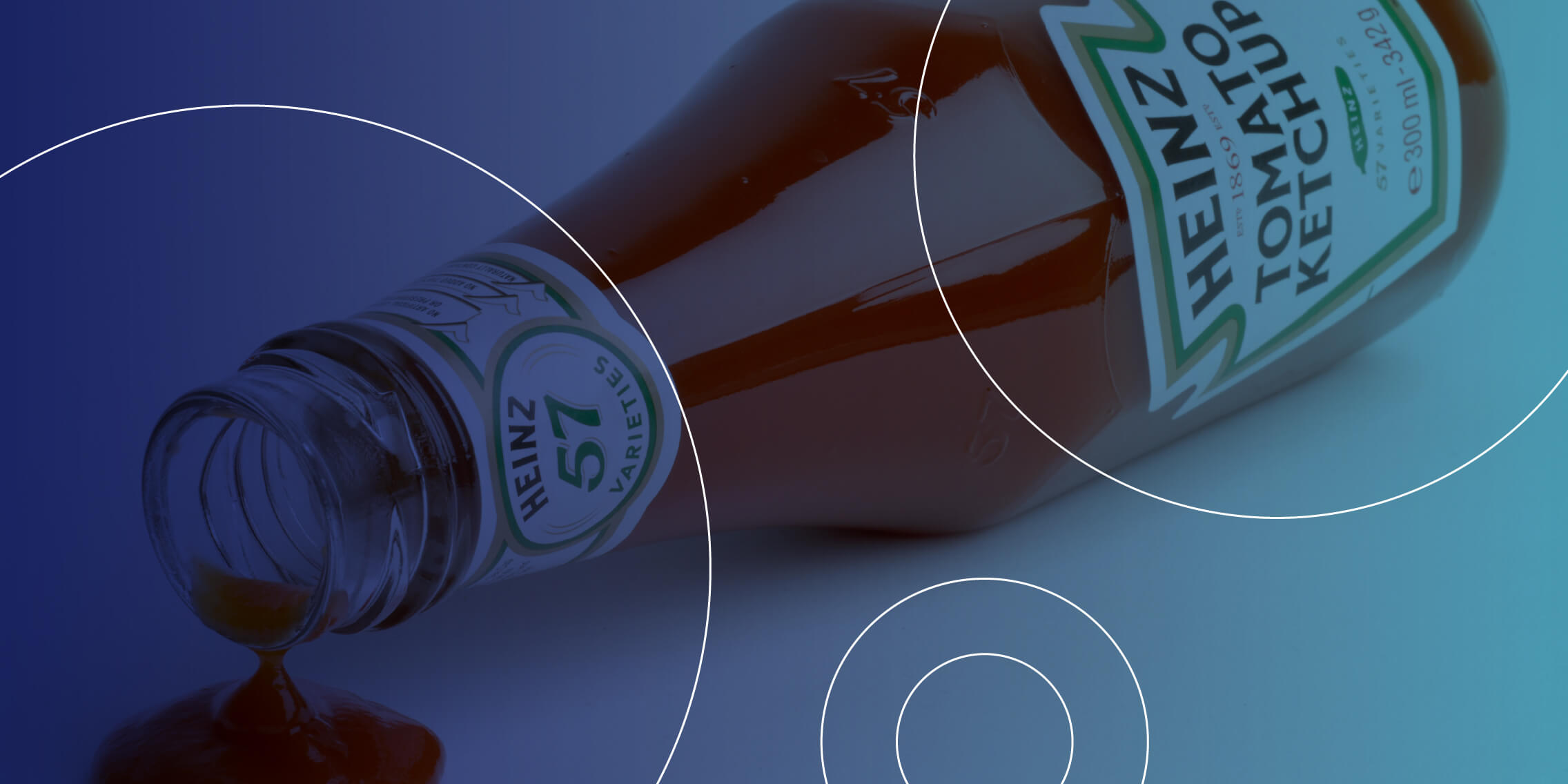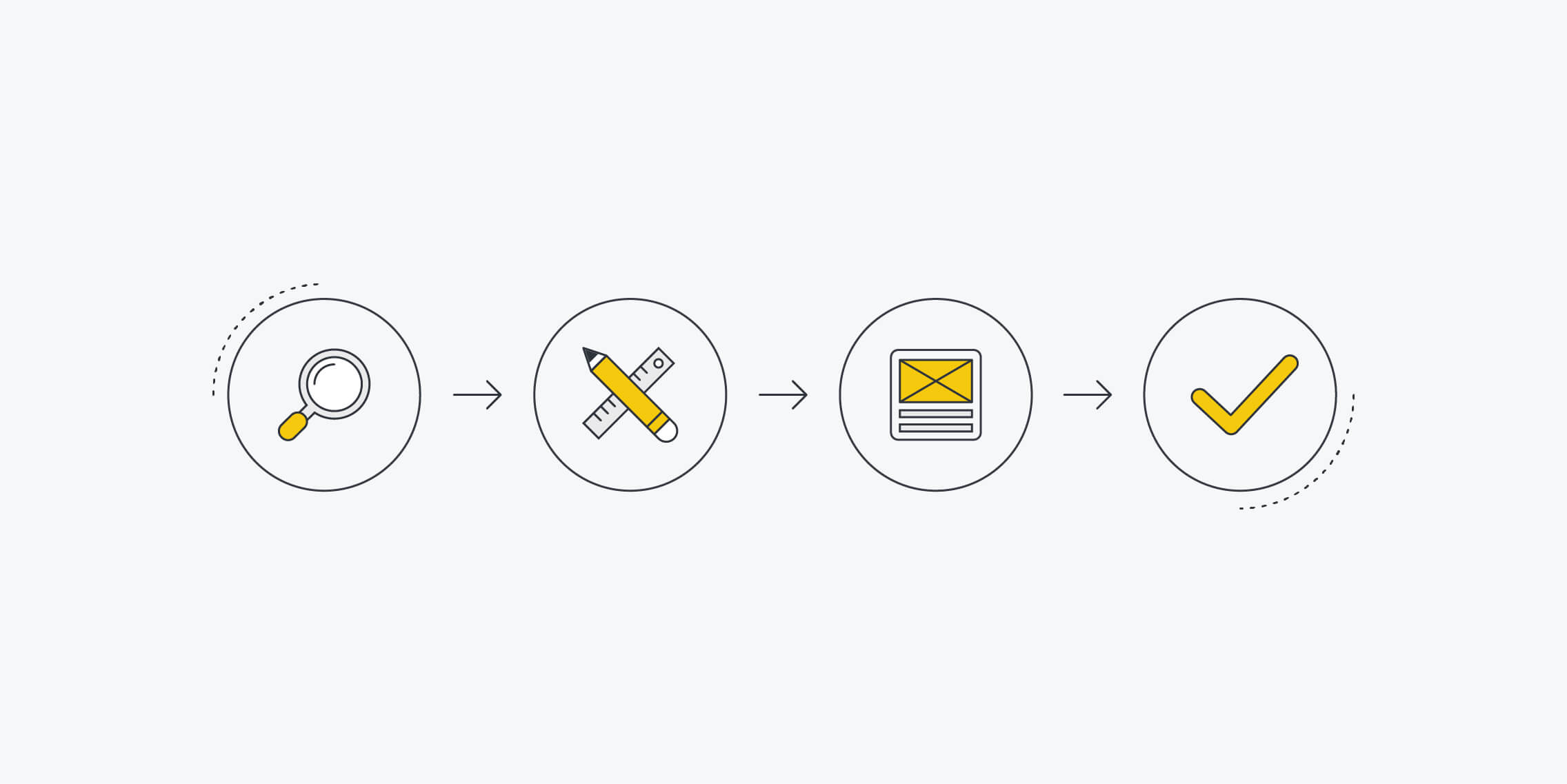The iconic glass Heinz ketchup bottle was once a staple in family kitchens around the world.
Thump, thump…and perhaps one last thump and the red sauce spurted out onto fries, burgers or whatever else was sitting on the dinner plate.
But in the late 1980s, the giant food company made the decision to monumentally switch up its packaging design. The motivation behind this change reveals a lot about the importance of user research and, particularly, observational user research.
The ketchup bottle story is a design lesson we cover in our Professional Diploma in UX Design – it’s a real life example that proves that design decisions should always be based on user research. It also provides other key UX design insights, more of which later.
But first…let’s go back to the very beginnings of the Heinz ketchup bottle.
Classic design
Heinz introduced tomato ketchup to its product range in 1876. It was one of the earliest offerings from the company but its very first product, trivia fans, was horseradish made by Henry J Heinz’s mother Anna. The ketchup packaging stayed virtually the same for more than a century, apart from small refinements in the glass bottle design.
The company had zero plans to change a design that was fulfilling its function and had been doing so for a very long time. If it ain’t broke, don’t fix it, right?
However, Heinz was on a separate quest to understand how people were consuming its ketchup product in the home. It commissioned researchers to visit family homes in the US and observe what Mom, Dad and the kids did when they all sat down around the dinner table. What they saw next gave them hugely important insights into their customers, probably way beyond what they had ever anticipated.
Doling out a little dollop
As many of us have experienced, getting ketchup out of a glass bottle is definitely one way to give the biceps a workout. Step one is to turn the bottle upside down and hold it in one hand. Step two is to vigorously bang the end of it with the other hand to get the ketchup into motion and out onto the plate.
Parents being observed during the research deemed it a job strictly for the grown ups. That’s the recollection of Casey Keller, former manager with Heinz, in Malcolm Gladwell’s seminal book of essays What the Dog Saw.
“I remember sitting in one of those households,” he says. “There was a three-year-old and a six-year-old, and what happened was that the kids asked for ketchup and Mom brought it out. It was a forty-ounce bottle.
“And the three-year-old went to grab it himself, and Mom intercepted the bottle and said, ‘No you’re not going to do that’. She physically took the bottle away and doled out a little dollop. You could see that the whole thing was a bummer.”
Identify and solve the problem
This was a moment of truth for the researchers and, by extension, for Heinz. A typical five-year-old consumes about 60 per cent more ketchup than a typical 40-year-old. But now, right before their eyes, the researchers could see that the product’s biggest consumers (kids) did not have direct access to it.
The company realised that it needed to put ketchup in a bottle that youngsters could control themselves. Otherwise, parental power would always limit consumption levels.
And so, the packaging design team focused its attention on solving this problem and improving usability. They came up with the EZ Squirt bottle, made out of soft plastic with a conical nozzle. It was much lighter for everyone to hold, especially kids, and the ketchup came out with much less effort.
It proved to be a hit for the company – initial research showed that in homes where the EZ Squirt bottle was used, ketchup consumption grew by as much as 12 per cent. Over time, the public favoured plastic bottle versions over the glass one and Heinz stopped manufacturing the glass bottle for home consumption.
It still features in lots of restaurants, though, and was reintroduced as a nostalgic limited-edition product in US grocery stores in 2011.
Keep observing your users
As a company renowned for its packaging innovations, it’s no surprise that Heinz continued to re-invent its ketchup bottle based on user research insights.
By the late 90s, sales of the condiment were down and the company wanted to see if this had anything to do with people’s experiences using the product. User research identified that people were still finding it troublesome to get ketchup out of the plastic bottle.
They often got too little ketchup but they would just make do with what they had rather than keep squeezing. And bits of ketchup would gather around the nozzle so it was a bit of a messy task. To combat these problems, people often stored their Heinz bottles upside down in the fridge or larder.
And so the Heinz team took that user insight and turned the problem, literally, on its head. The upside-down ketchup bottle was born – it helped consumers get the product quicker and with less mess at the opening of the bottle (a new valve invention also helped – check out this article about its inventor Paul Brown).
At the time, Casey Keller of Heinz welcomed the change as “probably the biggest idea in ketchup since the invention of the plastic squeeze bottle”. And that’s saying something as we know the plastic bottle was a huge deal…
Now, lots of our daily products are available in upside down packaging e.g. toothpaste, shampoo, pretty much all sauce bottles.
Three UX design take-homes
The Heinz ketchup bottle story teaches us three key UX lessons:
1. Heinz didn’t redesign the bottle just for the hell of it. It redesigned it based on data gathered during user research. Returning to what was said earlier, design decisions should always be based on user research. This will ultimately lead to a better product.
2. The new design was really successful because it solved a genuine problem, not just for Heinz but also for parents. And for kids too. Great products solve genuine problems.
3. This is the type of research data that Heinz would never have gotten by just talking to customers or running a focus group. It would never have cropped up in conversation and researchers would never have thought to ask it.
You’ll only get this type of insight by observing people using the product itself. There’s a big difference between observing people using your product and listening to people talking about your product.
One is really powerful and one is almost a waste of time. To keep going with the all-American theme, here’s a great quote from Yankee baseball player Yogi Berra:
You can observe a lot just by watching.
Want to learn more about UX?
Our Professional Diploma in UX Design gives students the skills, knowledge and portfolio to work in UX. Learn more here.
(Main photo © Jasmine Norris)





